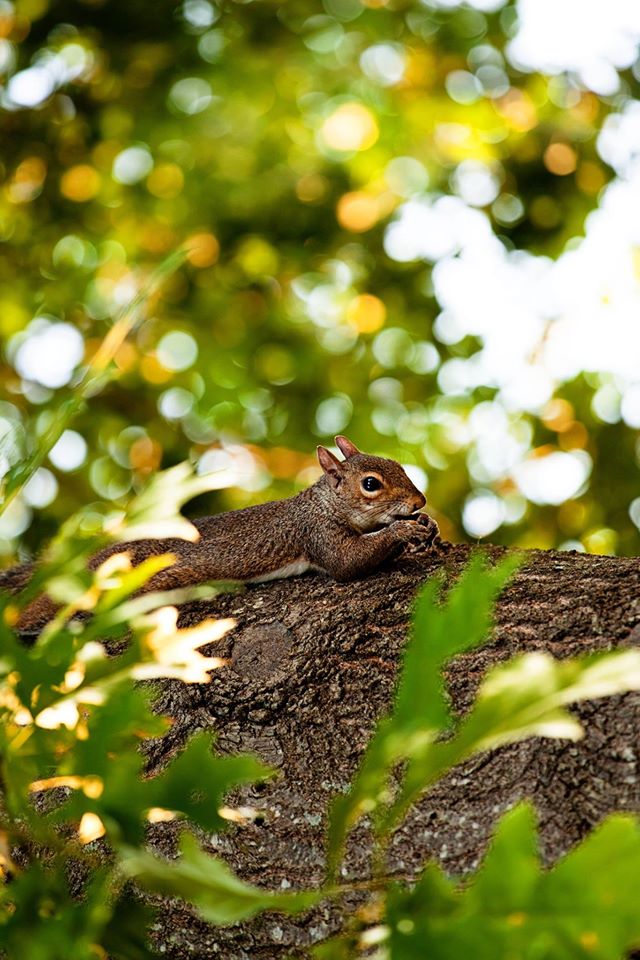
Photo: Melissa McMasters
As birds head south and the buzz of insects fades, the parks in late fall start to really quiet down. Except, of course, for the scuttle of a certain woodland creature that always seems to be on the move. Eastern gray squirrels, the most common species of squirrel in Western Pennsylvania, can be seen dashing across open fields and scaling tree branches like highly skilled trapeze artists.
If you think that squirrels seem to be always in a hurry, you’re right. For them, it’s all about survival in the form of finding — and hiding — food.
Local eastern gray squirrels (which can also be black in color) aren’t hibernators. In the winter they primarily survive on “mast,” or the nuts of hardwood forest trees such as oaks, beeches, walnut and hickory. These nuts are packed full of nutritious goodness that provides squirrels with the calories they need to build up layers of fat to survive the winter.
Gray squirrels store the nuts in “cache zones” (read: all over the place) so that they can access them during the winter months. They actually hide too many nuts to eat. So, inadvertently, squirrels are planting seeds throughout forest habitats that will someday grow to be new trees. These trees in turn provide food and shelter for forest animals, birds and other creatures that depend on hardwood trees for their survival.

Gray squirrels prefer to nest in tree cavities and will often take over abandoned woodpecker nests. They also construct nests by densely packing together leaves, sticks and other materials. Now is a good time to spot squirrel nests — just look for big bunches of leaves clustered near the tops of tree.
It’s easy to understand why squirrels are so skittish when you consider that their primary predators are birds of prey, particularly hawks and owls. Snakes and skunks also are glad to add squirrel to their dinner menu.
Getting a closer look at these little park residents is easy — building a squirrel feeder in your yard is a fun family activity that will keep your yard active all winter long. Find our squirrel feeder guide here!













